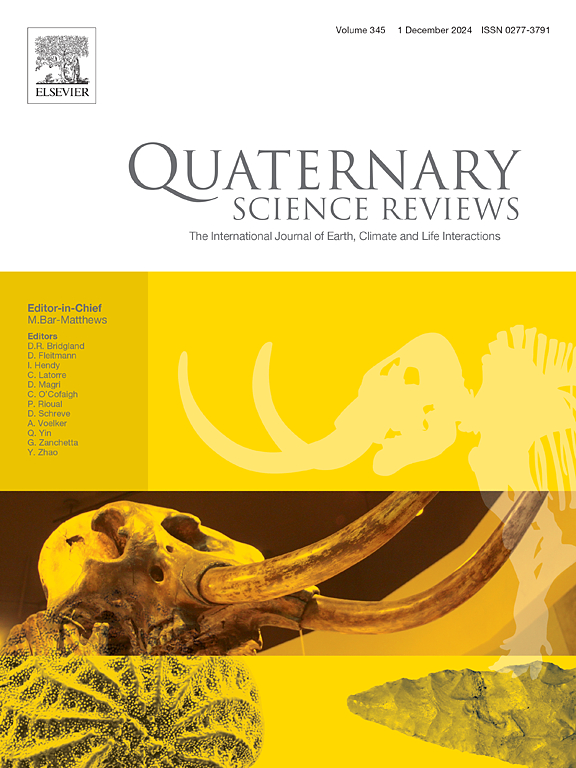Peak glacial-to-Heinrich-1 changes in Denmark Strait Overflow and seawater stratification in the Nordic Seas, a switchboard of changes in Atlantic Meridional Overturning Circulation and the 'Nordic Heat Pump'
IF 3.2
1区 地球科学
Q1 GEOGRAPHY, PHYSICAL
引用次数: 0
Abstract
Today, the sub-surface Denmark Strait Overflow (DSO) and the Iceland-Scotland Overflow form the starting points of the Atlantic Meridional Overturning Circulation and compensate for the poleward flowing Norwegian and Irminger branches of the North Atlantic surface current that drive the 'Nordic Heat Pump'. During peak glacial and early deglacial times, ice sheets on Iceland and Greenland, and ice-induced isostatic and eustatic sea-level changes reduced the Denmark Strait aperture and DSO. Yet, extremely high benthic stable carbon and oxygen isotope values together with very high ventilation ages of bottom waters suggest a north-south density gradient of intermediate-waters and persistent flow of partially Arctic-sourced waters through both Denmark Strait and Faeroe Channel, analogous to today. The arrival of deglacial meltwaters off northern Iceland induced the onset of Heinrich-Stadial 1 near 18.400 yr BP, as derived from 14C-plateau tuning. They caused a tipping point in DSO circulation shown by 3 °C warming, reduced ventilation and ventilation ages of bottom water, moreover, by increased radiogenic Nd isotope signatures at luff-side Site PS2644. These records suggest a sudden subsurface incursion of Atlantic intermediate waters across basaltic sediments from S.E. of Iceland. Deep-water convection off Norway then was replaced by weak brine water formation, coeval with a breakdown of the 'Nordic Heat Pump' evidenced by a temperature drop on Greenland. After 16.2 cal ka, a major meltwater outbreak from the Barents ice shelf led to modified Heinrich-1-style circulation until ∼15.1 cal. ka. Conversely, the DSO intensified during interstadial and Holocene times, causing sediment hiatuses at Site PS2644.
求助全文
约1分钟内获得全文
求助全文
来源期刊

Quaternary Science Reviews
地学-地球科学综合
CiteScore
7.50
自引率
15.00%
发文量
388
审稿时长
3 months
期刊介绍:
Quaternary Science Reviews caters for all aspects of Quaternary science, and includes, for example, geology, geomorphology, geography, archaeology, soil science, palaeobotany, palaeontology, palaeoclimatology and the full range of applicable dating methods. The dividing line between what constitutes the review paper and one which contains new original data is not easy to establish, so QSR also publishes papers with new data especially if these perform a review function. All the Quaternary sciences are changing rapidly and subject to re-evaluation as the pace of discovery quickens; thus the diverse but comprehensive role of Quaternary Science Reviews keeps readers abreast of the wider issues relating to new developments in the field.
 求助内容:
求助内容: 应助结果提醒方式:
应助结果提醒方式:


